
Behavioral analytics helps financial services firms understand client behavior by tracking digital interactions, enabling better client acquisition, retention, and engagement. Tools in this space focus on event tracking, segmentation, compliance, AI-driven insights, and integration with existing systems. Here's a quick overview of top tools:
Each tool offers unique features tailored to financial services, with varying pricing, integration options, and compliance capabilities. Choose based on your firm's specific goals, such as improving client engagement or meeting regulatory standards.
Choosing the right behavioral analytics tool for your financial services firm is a decision that can significantly influence how well you understand client behavior, maintain compliance, and drive growth. Here's what to consider when making your selection.
Start with strong data capture capabilities. The foundation of any behavioral analytics platform lies in its ability to track user interactions comprehensively. Your tool should capture detailed events across all digital touchpoints, including custom actions like portfolio views, calculator usage, or appointment scheduling. Real-time tracking is a must to address client needs as they arise.
Client segmentation is key. A good platform should let you group clients based on behavior, demographics, and engagement patterns. Advanced segmentation features, such as grouping by risk tolerance, communication preferences, or investment timelines, can help tailor your outreach. Look for tools that support dynamic segments, which automatically update as client behaviors evolve, ensuring your messaging stays relevant.
Prioritize compliance and security. In financial services, data protection is non-negotiable. The platform must offer robust encryption for data both in transit and at rest, along with comprehensive audit trails. Role-based access controls are essential for limiting data visibility based on team roles. Additionally, features like data retention policies, client consent management, and the ability to handle data deletion requests are critical for aligning with industry regulations.
Leverage AI automation for better results. Tools with AI capabilities can enhance your analytics and simplify compliance. Predictive analytics, automated alerts for key behavioral patterns, and machine learning models that adapt over time can help you anticipate client needs while staying within regulatory frameworks.
Ensure seamless integration. The tool should work well with your existing systems, such as CRM, marketing automation platforms, and client portals. This integration ensures behavioral insights flow into your workflows automatically, enabling advisors to act on data without juggling multiple platforms.
Look for intuitive reporting and visualization features. A great tool will present complex data in an easy-to-digest format. Customizable dashboards let team members focus on metrics relevant to their roles, whether it’s high-level summaries for management or detailed client behavior reports for advisors.
Scalability matters as your firm grows. Choose a platform that can handle increasing data volumes without slowing down. It should also offer flexible pricing models that align with your growth. Make sure the tool can support additional users, data sources, and advanced features as your analytics needs expand.
Evaluate support and training resources. A platform is only as good as your team’s ability to use it. Opt for tools that offer comprehensive onboarding, ongoing training, and responsive support. Resources like detailed documentation, video tutorials, and active user communities can help your team maximize the tool's potential while staying compliant.
Don’t overlook the financial aspect. The total cost of ownership includes more than just subscription fees. Consider implementation costs, training expenses, integration fees, and ongoing maintenance. Some platforms offer transparent pricing, while others may require custom quotes based on your specific needs and data volumes.
Finally, test each platform using real-world scenarios tailored to financial services. This hands-on approach ensures the tool meets both regulatory standards and your client engagement goals.
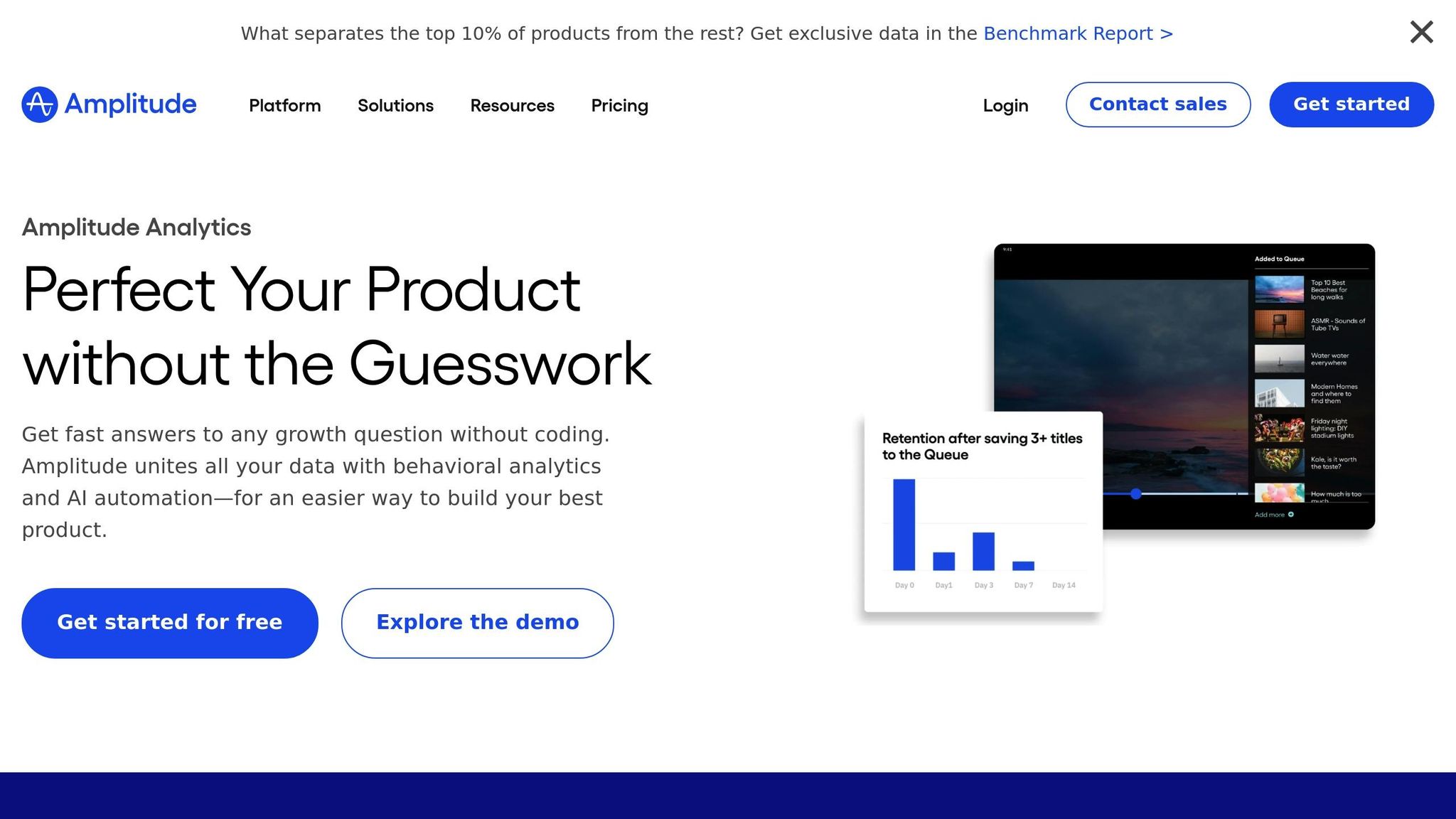
Amplitude is a behavioral analytics platform designed to help financial services firms track and analyze client interactions across all digital touchpoints. Let’s delve into how its features address the specific needs of this industry, where precision and security are paramount.
Amplitude’s event-based tracking system captures client interactions in detail. It goes beyond standard web events, enabling firms to monitor custom actions like portfolio views, document downloads, calculator usage, and appointment requests - activities that are particularly relevant for financial services.
For financial advisors, this means they can track behaviors such as completed risk assessments, updates to investment goals, or changes in communication preferences. These insights help uncover patterns that may indicate client satisfaction, engagement, or even potential churn. Plus, with real-time processing, advisors can respond quickly to emerging trends or issues.
The platform also supports a standardized event taxonomy, ensuring data consistency across teams. This is especially valuable for larger firms, where multiple advisors rely on uniform data to make informed decisions.
Amplitude’s cohort analysis tools allow firms to group clients based on shared behaviors or characteristics over time. For example, advisors can create cohorts based on onboarding dates, investment preferences, portfolio performance, or even communication frequency.
By tracking these cohorts, firms gain insights into retention trends, engagement levels, and service preferences. Cohorts are automatically updated, making segmentation dynamic and ensuring that advisors always work with the most current data. This enables personalization at scale - advisors can tailor their outreach based on actual client behavior rather than assumptions, ensuring their approach evolves with the needs of each client group.
Compliance is a critical concern in financial services, and Amplitude addresses this with robust data governance features. Role-based access controls ensure that team members can only access data relevant to their responsibilities, minimizing risks.
The platform also supports compliance with regulations like GDPR and state privacy laws through configurable data retention policies. These policies can automatically delete client data after a set period, while comprehensive audit trails document who accessed what data and when - essential for regulatory reviews.
Additional features like client consent management and data deletion capabilities make it easier for firms to honor privacy preferences and handle right-to-be-forgotten requests. All data is encrypted during transmission and storage, meeting the stringent security requirements of the financial sector.
Amplitude also leverages AI to give financial advisors deeper insights into client behavior. Predictive analytics can identify clients who may be disengaging early, giving advisors a chance to address concerns before they escalate.
The platform’s anomaly detection flags unusual behavior patterns, such as sudden changes in how often clients check their portfolios, shifts in communication habits, or reduced service usage. These alerts help advisors act quickly to address potential satisfaction issues.
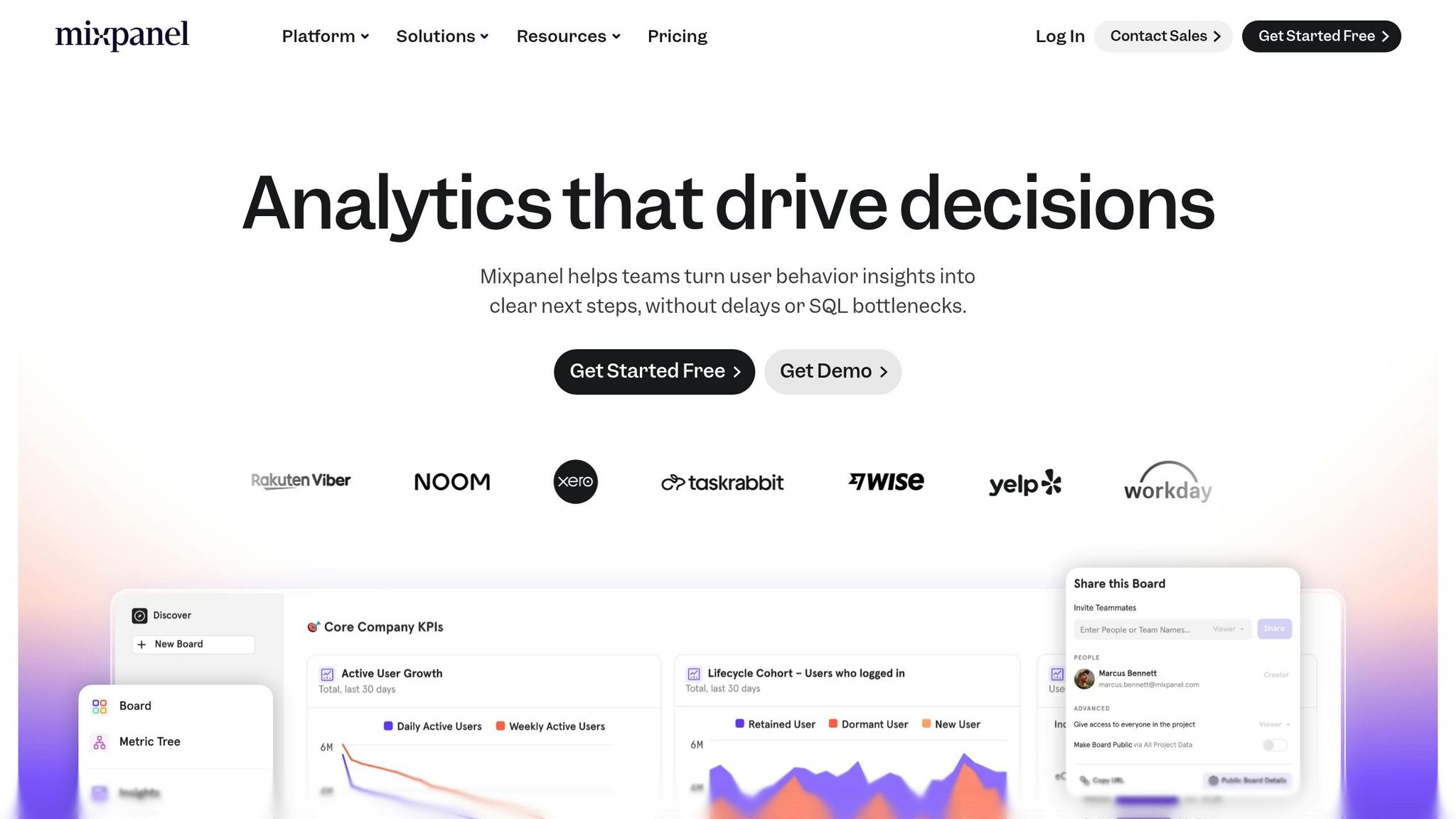
Mixpanel stands out as a powerful behavioral analytics tool tailored to help financial services firms dive deep into understanding client interactions. By focusing on event tracking and personalization, it offers unique insights that can guide better decision-making.
Mixpanel takes event tracking to the next level by offering detailed customization options. It captures key client actions like submitting loan applications, reviewing portfolios, or reaching out for support. Beyond just tracking these events, it records additional details such as time spent on tasks, specific assets viewed, and the type of device used. This level of detail provides a clearer picture of which services resonate with different client groups.
The platform’s funnel analysis feature is another game-changer. It maps out the entire client journey - from the first website visit to opening an account - highlighting where potential clients drop off. This helps firms identify and address weak points in the conversion process, improving overall engagement.
Mixpanel’s cohort analysis tools allow firms to group clients based on shared behaviors and track how their engagement changes over time. Whether it’s monitoring onboarding progress, service usage patterns, or account values, these dynamic segments update automatically as clients evolve.
This segmentation opens the door to highly targeted personalization. For example, financial advisors can pinpoint clients who frequently use retirement planning tools and send them tailored messages. Similarly, they can identify clients whose engagement has dropped and take steps to re-engage them. Integration with A/B testing further enhances this capability, enabling firms to test different strategies or offerings with specific groups and refine their approach based on real-world data.
In the tightly regulated financial services industry, compliance is non-negotiable. Mixpanel addresses this with robust data governance features, including role-based access controls that ensure team members can only see data relevant to their roles, safeguarding client confidentiality.
The platform also supports compliance with GDPR and CCPA regulations through tools for managing data retention and consent. It can automatically delete client data after specified periods and provides tools to track and honor privacy preferences, such as opt-out requests and data deletion mandates.
Mixpanel’s AI capabilities bring a proactive edge to client engagement. By analyzing shifts in client behavior in real time, it enables advisors to respond immediately with personalized actions based on individual client journeys. Predictive analytics help identify clients at risk of churning, while anomaly detection flags unusual patterns, such as sudden drops in digital activity.
The platform’s automated insights feature continuously uncovers trends, such as a connection between mobile app usage and increased investments or a correlation between webinar attendance and higher satisfaction levels. These insights equip firms to refine their services and enhance client experiences, ensuring they stay ahead in a competitive market.
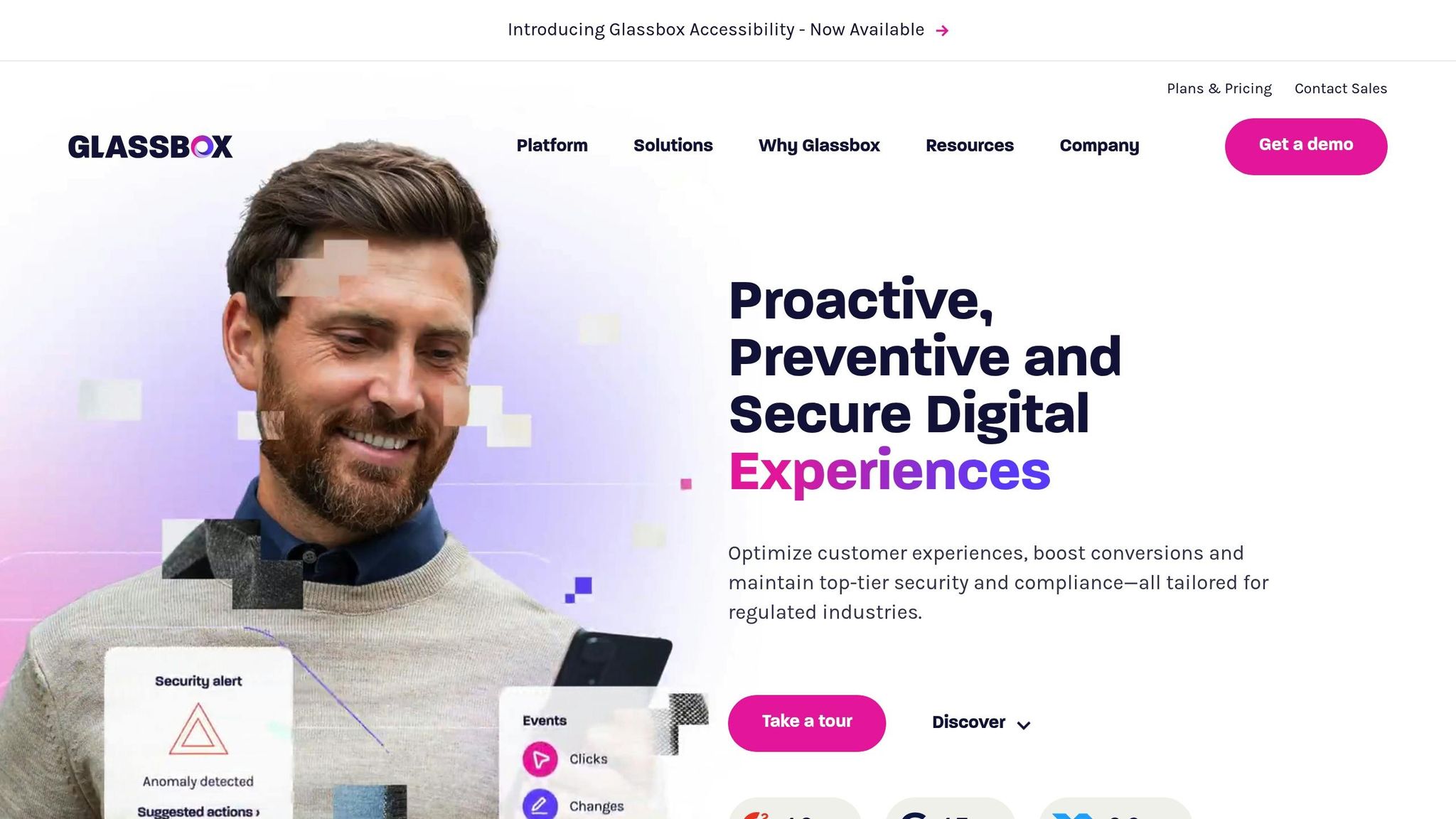
Glassbox provides detailed session recordings that go beyond surface-level metrics, helping businesses dive deep into user behavior. By analyzing digital client interactions, it enables companies to craft more tailored strategies for their customers.
Glassbox captures full client sessions, making it easier to identify where users might face navigation challenges. Reviewing these sessions can uncover specific points in the customer journey that demand attention or improvement. This rich session data becomes the foundation for further analysis powered by artificial intelligence.
With AI at its core, Glassbox examines behavioral patterns and flags unusual activity. It also identifies emerging engagement trends, giving businesses a clearer picture of how users interact with their digital platforms.
While delivering actionable insights, Glassbox prioritizes data security. It protects client information with strong privacy measures, controlled access, and compliance tools. Role-based access controls ensure that teams can view and analyze client interactions relevant to their specific roles, keeping data review both secure and efficient.
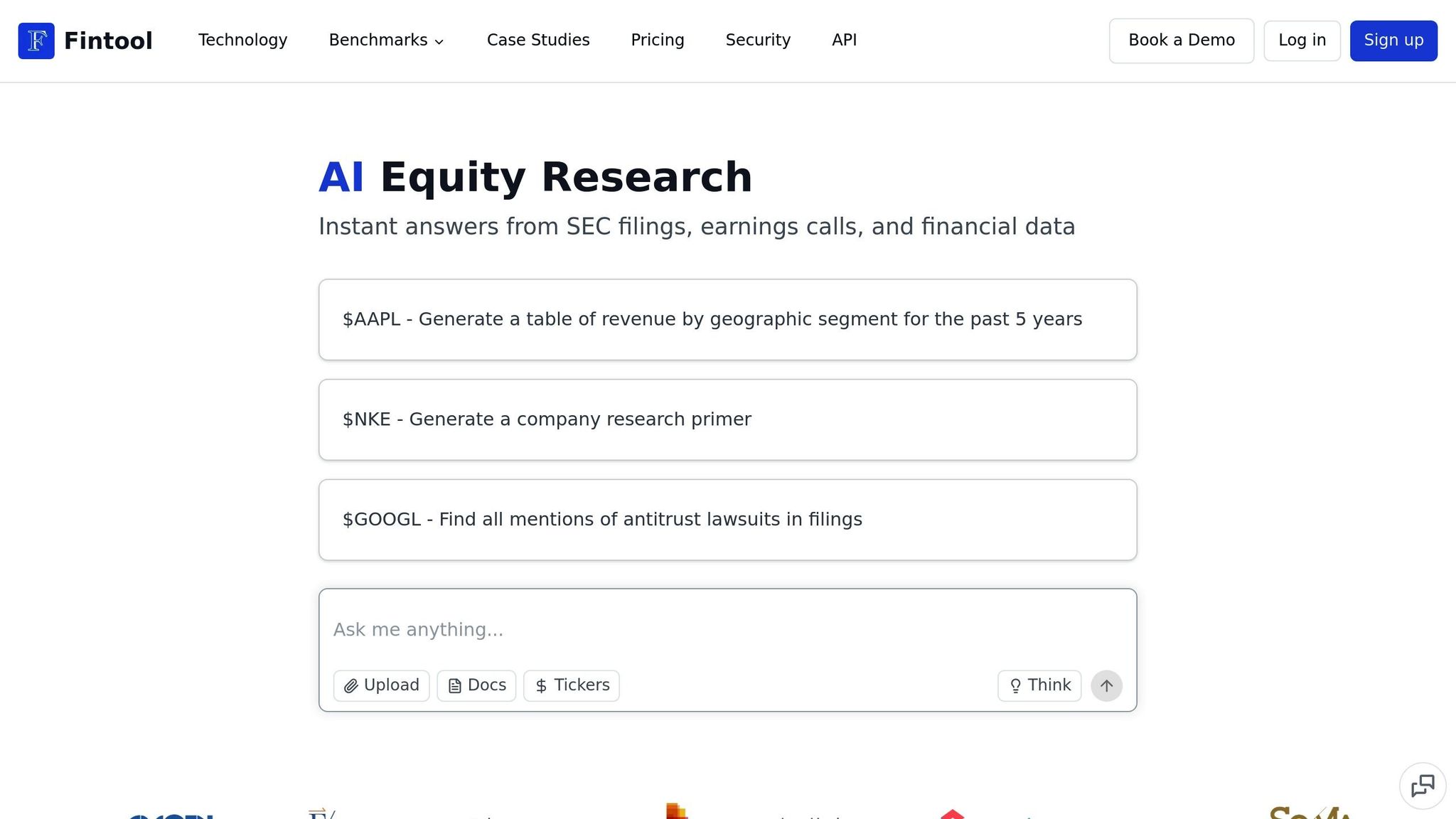
Fintool provides behavioral analytics tailored for financial services by monitoring key client interactions. By leveraging precise behavioral data, it equips financial advisors with insights they can act on. The platform zeroes in on user behavior patterns that are most relevant to wealth management professionals and financial advisors.
Fintool tracks critical client actions like portfolio views and document downloads. It monitors specific events such as clients checking account balances, reviewing investment performance, or engaging with educational materials. This detailed tracking helps advisors pinpoint which services resonate most with clients and uncover opportunities for deeper engagement.
The platform also timestamps client interactions, offering a clear picture of how users navigate financial dashboards and reports. Advisors can see which sections of the portal draw the most attention, making it easier to prepare for client meetings or spot accounts that may need extra attention.
Fintool takes its event tracking a step further by segmenting clients into meaningful groups. It clusters clients based on shared behavioral patterns, enabling financial firms to design targeted engagement strategies. These cohorts might be defined by investment activity levels, preferred communication methods, or how clients use services. This segmentation allows advisors to customize their approach for different client groups.
The platform's personalization tools use behavioral data to recommend timely outreach efforts and suggest relevant financial products. For example, if a client frequently explores specific portfolio sections, Fintool can alert advisors, prompting them to initiate timely and relevant communications.
Recognizing the strict regulatory landscape of financial services, Fintool ensures compliance by maintaining detailed audit trails and masking sensitive data. It adheres to privacy regulations such as GDPR and CCPA, ensuring that all behavioral tracking meets the industry's privacy standards.
The platform includes robust data access controls, restricting behavioral insights to authorized personnel. Additionally, it automatically masks sensitive financial details while still offering valuable analytics, allowing compliance teams to review data usage without compromising client privacy or regulatory obligations.
Fintool's AI capabilities take its analytics to the next level by identifying patterns that predict client needs. It can flag unusual account activity that might indicate life changes, investment concerns, or new planning opportunities. This enables advisors to proactively reach out to clients before challenges arise or chances are missed.
Automation features further enhance the platform's utility. For instance, if a client frequently reviews retirement planning materials, the system can automatically deliver relevant educational content or suggest scheduling a retirement planning session with their advisor. This ensures timely and personalized client interactions based on real-time behavior patterns.
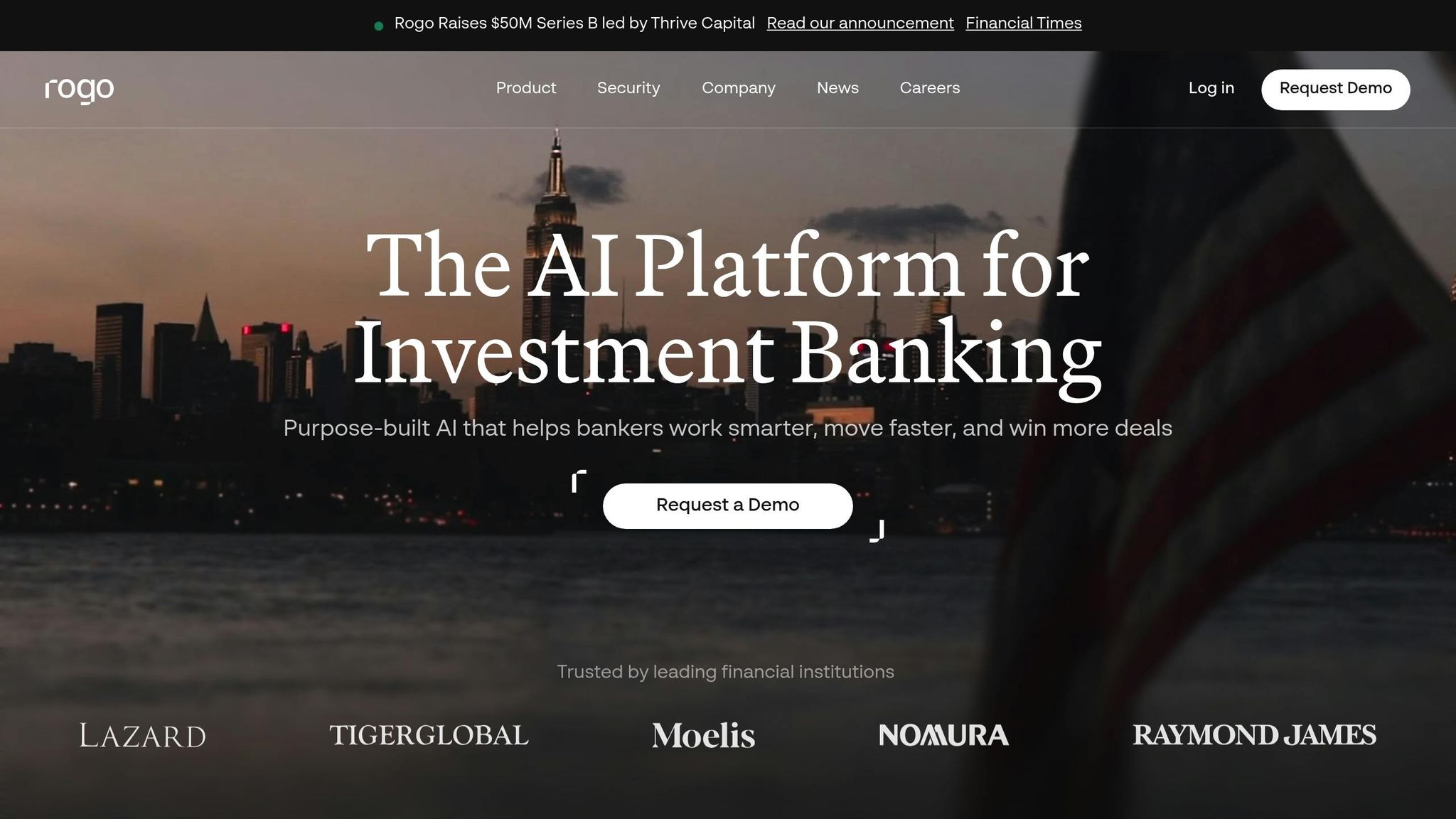
Rogo steps into the world of behavioral analytics with a focus on precision and compliance, tailored specifically for financial institutions. It equips financial advisors with the tools to track client engagement across digital platforms, combining event tracking with AI-driven insights.
Rogo monitors key actions like logins and feature usage across various devices and platforms. This gives advisors a clear view of client activity, helping them identify areas where improvements can be made.
Using the detailed data it collects, Rogo enables client segmentation based on engagement patterns. This segmentation allows advisors to craft personalized communication strategies and reach out at the right moments, leveraging shifts in client behavior.
Built for the financial sector, Rogo prioritizes data security and regulatory compliance. Features like audit logging and automated monitoring ensure client data is managed responsibly, aligning with industry regulations while safeguarding privacy.
By analyzing behavioral trends, Rogo’s AI delivers predictive insights, enabling advisors to act proactively. It also automates follow-ups, ensuring timely and relevant interactions with clients.
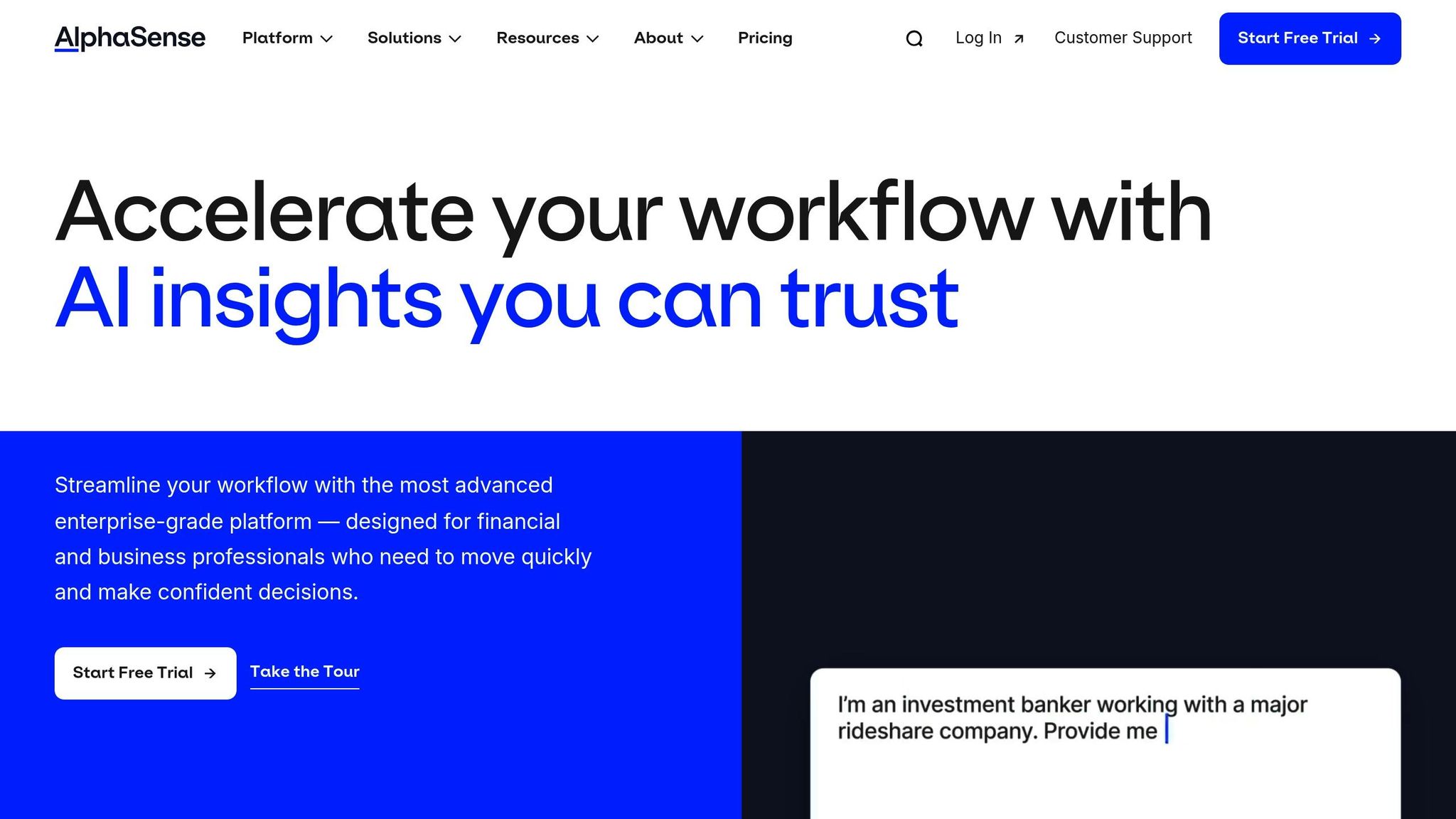
AlphaSense provides a unique approach to market intelligence by using behavioral analytics tailored for the financial services sector. By tapping into natural language processing (NLP), the platform examines how financial professionals interact with research materials and market data, uncovering trends that can guide decision-making. Its emphasis on research content sets it apart, offering a distinct perspective within the behavioral analytics landscape.
AlphaSense uses NLP to monitor user engagement with search queries and document interactions. This technology automatically highlights relevant content, creating personalized research feeds that adapt as market conditions change. The result is a dynamic, user-centric experience that evolves alongside financial trends.
In addition to its AI-driven personalization, AlphaSense meticulously tracks how users engage with research materials. By analyzing these interactions, the platform provides detailed insights into engagement patterns. These analytics help financial firms refine their research workflows and pinpoint areas that may need more attention or improvement.
AlphaSense also addresses key concerns like compliance and data governance. It includes features such as audit trails to track research activity and strict data access controls to protect sensitive information. By integrating these safeguards, AlphaSense enhances the use of research data while maintaining the necessary standards of security and compliance, making it a valuable tool for financial services professionals.
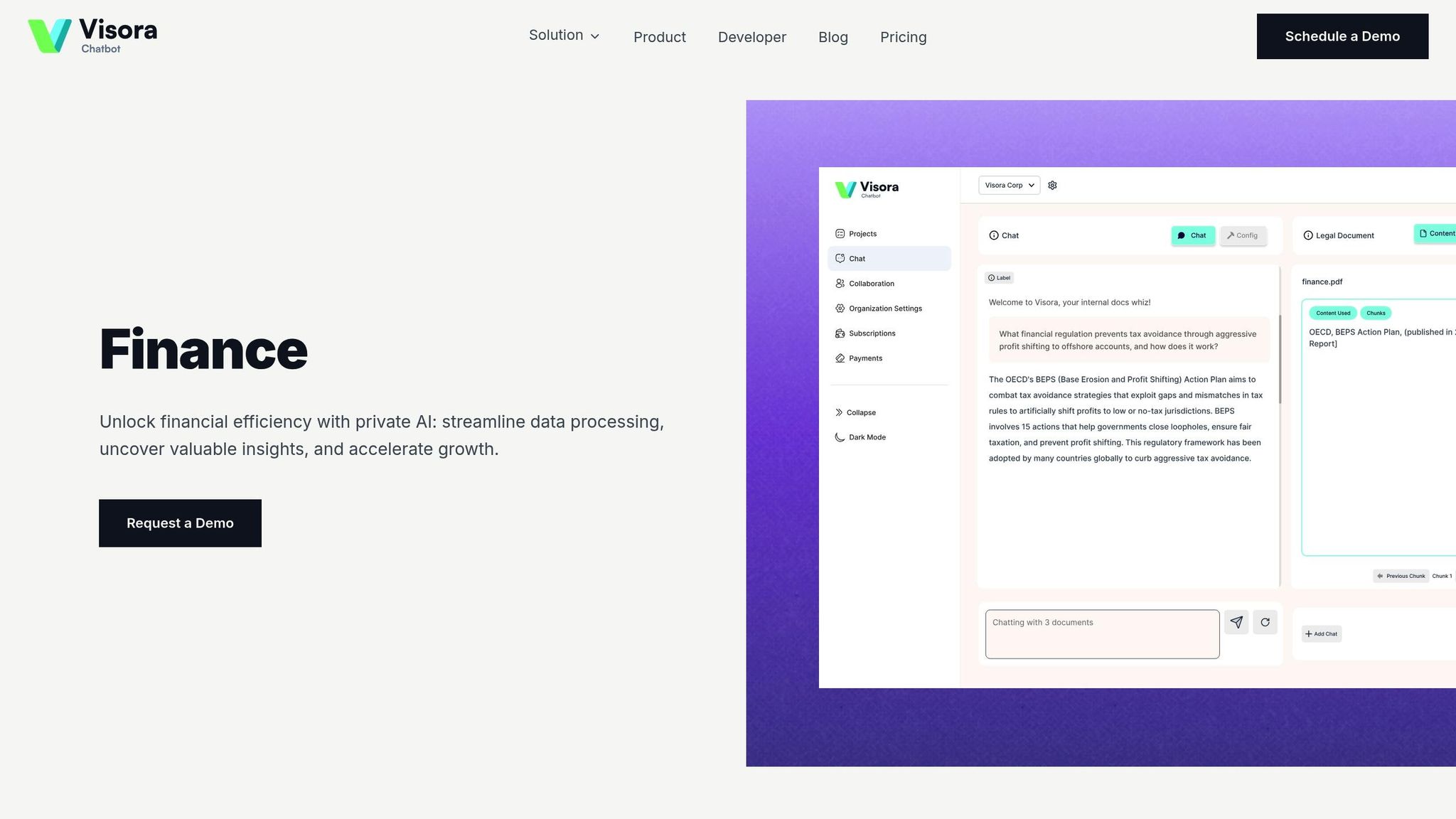
Visora stands out as a specialized analytics tool designed specifically for the financial services sector. The platform takes a tailored approach to behavioral analytics through its AI-powered growth solutions, aimed at helping B2B and B2I leaders achieve measurable results. Founded by Danny Kim, Visora has already generated over $70 million in pipeline revenue across 30+ partners, with an impressive average of $150,000 per client.
At the heart of Visora’s offerings is its Trifecta Program, which integrates the B2B Vortex Funnel, AI Augmented Appointment Setting, and DD Strategy Consulting. This program leverages AI to assess buyer intent signals across various touchpoints, creating detailed client profiles and refining appointment-setting processes on the fly.
The AI engine dives deep into behavioral data to pinpoint high-value prospects, such as investor relations professionals, commercial real estate leaders, and financial advisors. By analyzing activity across email campaigns, website visits, and content engagement, Visora dynamically adjusts messaging and timing to improve response rates, ensuring that outreach efforts hit the mark.
Visora excels in tracking specific client behaviors throughout the acquisition process. From initial website visits to final conversion, the platform monitors over 2,000 qualified calls with top decision-makers, offering actionable insights into the most effective client interactions.
The platform gathers data from a variety of channels, including personalized sales funnels, CRM systems, and marketing campaigns. This comprehensive tracking enables financial advisors to spot behavioral trends and fine-tune their strategies in real time. With the ability to process events instantly, firms can respond quickly to shifts in prospect behavior, keeping them one step ahead.
Visora uses advanced CRM systems and data-driven marketing techniques to segment clients into specific cohorts based on their behaviors and engagement levels. Whether targeting real estate syndicate leaders or investor relations experts, the platform delivers personalized experiences tailored to each group.
Its personalization engine ensures that messaging is adjusted based on cohort characteristics. For instance, high-net-worth individuals receive different communications than institutional clients, creating a more tailored and effective outreach strategy. This precise segmentation not only improves conversion rates but also helps financial firms reduce acquisition costs by focusing on the right audience with the right message. By aligning with industry standards, Visora enhances client engagement and optimizes targeted outreach efforts.
Use the chart below to evaluate the features, compliance capabilities, integrations, and pricing of various tools. This guide is designed to help you choose the right solution for behavioral analytics based on your specific needs.
| Tool | Key Features | Compliance Capabilities | Integration Options | Pricing |
|---|---|---|---|---|
| Amplitude | Event tracking, cohort analysis, predictive analytics | SOC 2 Type II, GDPR, CCPA | 100+ integrations, including Salesforce, HubSpot | Starter: Free, Plus: $995/month, Enterprise: Custom |
| Mixpanel | Real-time analytics, A/B testing, user segmentation | SOC 2, GDPR, HIPAA available | 200+ integrations via APIs | Free: Up to 100K events, Growth: $25/month, Enterprise: $833/month |
| Glassbox | Session replay, heatmaps, journey analytics | PCI DSS, SOX, GDPR | Native integrations with major CRMs | Custom pricing starting at $2,000/month |
| Fintool | Financial-specific dashboards, risk analytics | SEC compliance, FINRA reporting | Limited to financial platforms | $500-$1,500/month per user |
| Rogo | Client behavior tracking, portfolio analytics | Investment advisor compliance | Wealth management platforms | $200-$800/month per advisor |
| AlphaSense | Market intelligence, sentiment analysis | Wall Street compliance standards | Bloomberg, Refinitiv, S&P | $1,200-$3,600/month per seat |
| Visora | AI-powered growth analytics, buyer intent signals | B2B compliance frameworks | CRM systems, marketing platforms | Custom pricing via Trifecta Program |
The ease of setup varies widely. Mixpanel and Amplitude are relatively user-friendly, while platforms like Glassbox and AlphaSense often require dedicated support and training. For enterprise-level deployments, additional costs may apply for professional services. This chart serves as a quick reference to match tools to your firm's analytics requirements.
Implementing behavioral analytics in financial services requires a well-thought-out strategy that aligns with your firm's goals and complies with industry regulations. With proper planning, collaboration among stakeholders, and a phased rollout, you can maximize the benefits while minimizing disruptions to existing workflows.
Begin by outlining your objectives. Are you aiming to improve client acquisition, strengthen compliance, or boost portfolio performance? Different tools cater to different needs - some specialize in tracking conversions and buyer intent, while others focus on advanced regulatory monitoring. Once you've identified your goals, ensure your current systems can support the integration of the new tool.
Take a close look at your existing technology stack to ensure it can integrate seamlessly with the analytics tool you choose. Opt for platforms that offer native integrations to avoid lengthy custom development and speed up deployment.
Start small by rolling out a pilot program in a specific department or client segment. This will allow you to identify potential issues and refine your approach before scaling up.
The banking industry is undergoing a seismic shift, making behavioral analytics a "must-have" for staying competitive and adapting to changing customer expectations.
A phased rollout not only minimizes disruptions but also ensures steady progress.
As you plan your timeline, prioritize compliance from the outset. Verify that the analytics tool meets all necessary regulatory standards to safeguard sensitive data and adhere to industry requirements.
Factor in the costs of setup, training, and ongoing support. Professional guidance can make a significant difference in the smooth implementation of your analytics system. For example, Visora's Trifecta Program combines strategy consulting with deployment support, helping businesses achieve their goals efficiently.
Partnering with digital transformation experts can simplify the complex undertaking of developing and implementing a robust behavioral analytics system tailored to specific business goals.
The success of your new system depends on user adoption. Design role-specific training programs that focus on practical applications of the tool. Ensure both technical teams and business stakeholders receive adequate initial and ongoing training to maximize the tool's effectiveness.
Behavioral analytics tools are not one-size-fits-all. Tailor the solution to fit your institution's unique workflows and client lifecycle.
Behavioral analytics is not a one-size-fits-all solution; customization is crucial for financial institutions to address unique needs and challenges.
Choose a vendor with expertise in the financial sector to ensure the tool meets your specific requirements, whether it's managing client lifecycles or analyzing investment behaviors.
Ongoing monitoring is essential for long-term success. Set clear key performance indicators (KPIs) to track data quality, adoption rates, and overall impact. Regular reviews can uncover underused features or training gaps, ensuring the system continues to deliver value.
The global market for behavioral analytics in banking is projected to reach $4.67 billion by 2027.
Behavioral analytics tools have become a cornerstone for financial services firms aiming to maintain an edge in a competitive market. These platforms enable companies to track client interactions, anticipate investment behaviors, and enhance portfolio management - all while meeting strict compliance requirements.
Each tool discussed earlier brings its own set of strengths. Whether it’s Amplitude with its detailed event tracking or Visora offering AI-driven growth solutions, these platforms provide unique capabilities that cater to varying needs. What’s clear is the importance of selecting tools that not only analyze client behavior but also align seamlessly with your operational goals.
When choosing a platform, focus on integration with your existing systems. The ability to tailor analytics workflows - whether for tracking client lifecycle stages or understanding investment decision trends - can unlock actionable insights. This level of customization is key to turning behavioral data into meaningful strategies for client acquisition and retention.
To sustain long-term benefits, continuous optimization is essential. Firms that see the most success invest in employee training and regularly review performance to ensure they're getting the maximum value from their tools. Those who adopt these platforms thoughtfully and strategically can position themselves for success in acquiring and retaining clients, as well as driving overall business growth.
Begin with clear goals, ensure your data infrastructure supports your needs, and work with vendors who understand the unique challenges of financial services. By selecting the right tool and implementing it effectively, firms can turn behavioral insights into a powerful competitive advantage.
To select the best behavioral analytics tool, financial services firms should first pinpoint their primary objectives. Are you aiming to boost customer engagement, improve risk evaluations, or meet regulatory standards? Knowing your goals will guide your decision-making.
Look for tools that can handle large-scale operations, process data efficiently, and provide in-depth insights into how users interact with your services. Key features like session replays, heatmaps, and automatic data collection can give you a clearer picture of user behavior.
It's also important to evaluate the tool's compatibility with your existing systems and its adaptability to your firm's specific needs. A solution that integrates smoothly and offers flexible data analysis capabilities can help your business uncover actionable insights, driving both growth and operational efficiency.
When selecting a behavioral analytics platform for financial services, it's crucial to focus on compliance and security features that meet industry standards and protect sensitive information. Prioritize platforms equipped with detailed activity logging and alert systems to monitor and document data access effectively.
Important functionalities to look for include anomaly detection, real-time monitoring, and AI-powered threat identification to help prevent fraud and cyberattacks. The platform should also enable behavioral data analysis to spot unusual activity patterns, ensuring adherence to regulations while safeguarding both your clients and your business.
AI-powered tools are transforming behavioral analytics by enabling real-time personalization and tailored interactions. For financial services, this means gaining deeper insights into client needs and responding more effectively. The result? A more proactive approach to client engagement that fosters trust, boosts satisfaction, and strengthens loyalty.
With the ability to analyze patterns and predict behaviors, AI equips financial advisors to offer timely and relevant support. This approach not only enhances client engagement but also minimizes churn, helping to build lasting relationships and ensure long-term retention.